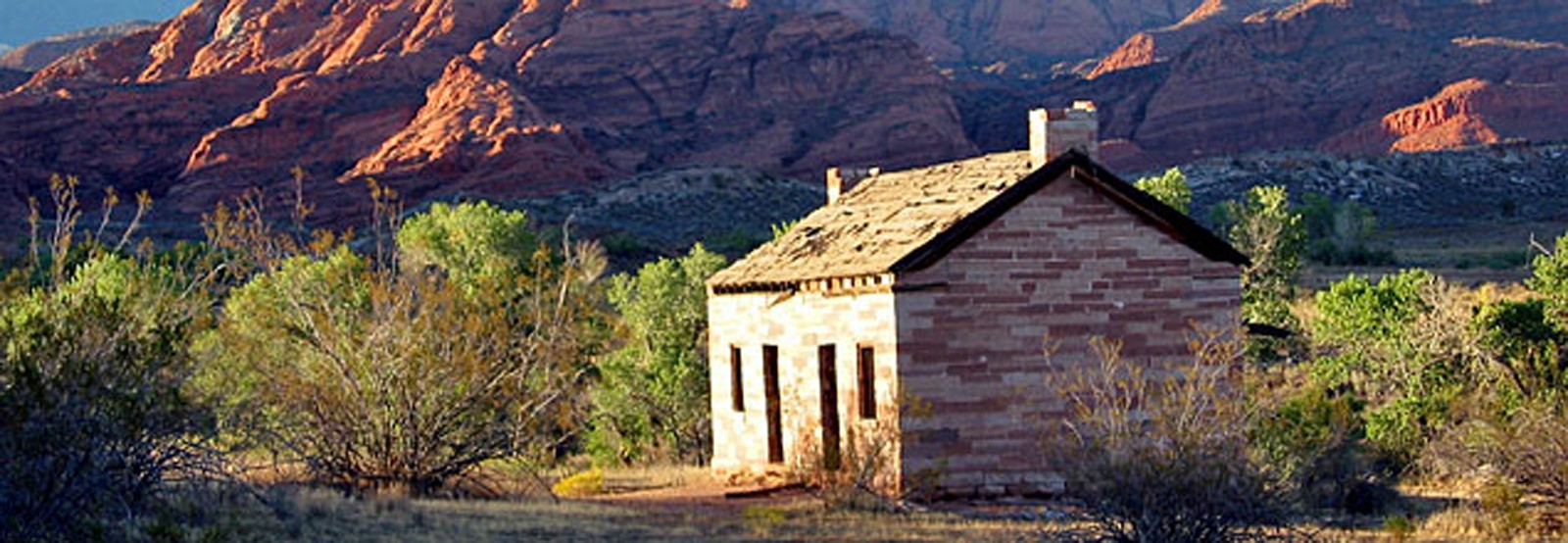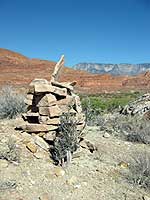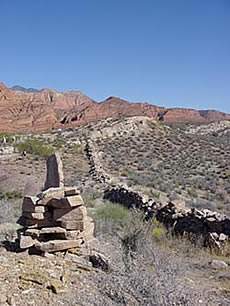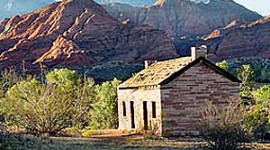Working Landscapes: Orson Adams House

The Orson Adams House, along with its terraced fields, irrigation ditches, and other agrarian features, preserves a 2000-year record of changing land use.
Although located within 15 miles of the ever-growing urban areas of the St. George Basin, Utah, the Adams House landscape retains its rural 19th century character and integrity. The 200 acres surrounding the house contain many sites and features that date back to prehistoric cultures, including Virgin Anasazi and Southern Paiute. Natural resources within this landscape supported many cultures: water diverted from Quail and Leeds Creek irrigated crops; timber, clay for ceramics and tool stone were readily available. Although the Virgin Anasazi appear to have migrated away from southern Utah by the 12th century, the Southern Paiute continue to live here today.
History
In the mid 19th century, members of the Church of Jesus Christ of Latter Day Saints colonized the area. By 1861 the agricultural settlements of Leeds and Harrisburg had been built along Quail and Leeds Creek. The Orson Adams house was located in the westernmost section of Harrisburg. During the later part of the 19th century, Orson Adams and other Harrisburg settlers struggled to farm the land using water from the adjacent creeks. Their agricultural products were sold to Silver Reef, a productive silver mining camp. However, as more and more water was diverted to the mining camp and the growing town of Leeds, Harrisburg failed to thrive.

The surrounding landscape concentrates thousands of years of history and changing land use in a very small area. A complete story can be told about the West; the 'mythic West' from the harsh geographical reality, to manifest destiny and religious freedom, and the romantic notions of how the West was won. These diverse perspectives portray a comprehensive picture of how people and their cultures interact with their environment.
Ecologically, the landscape has one of the highest quality riparian areas in the surrounding region. On the edge of the Red Cliffs Desert Reserve is a federally protected tortoise habitat.
By the turn of the century, most of the original settlers had left. The Orson Adams house, located south of Quail Creek, survived because it had adequate water to continue farming. The house, continuously occupied until the mid-20th century, has retained historic integrity, and is testimony to the Mormon agricultural settlement.
Threat
Recent federal acquisition has protected the site from development, but the small campground and day use area are popular sites for teen parties. Vandalism has seriously compromised the historic building, and sprawling home developments have engulfed other significant buildings found on the opposite side of the highway. The Orson Adams home is seriously deteriorated. Plans to widen the highway could destroy the rural character, as well as historic walls supporting the road grade.

How to Help
The area is well suited to become an interpretative site and event center, but it needs basic improvements to inspire this development. There is a broad base of local and statewide grassroots and professional support for protecting this site. In 2003, the Utah Chapter of the American Society of Landscape Architects (ASLA), the Bureau of Land Management (BLM), and Washington County explored options for preserving and interpreting this site. The group was overwhelmed with the potential and current charm. A paper summarizing the results will be available in late October, 2004.
Learn More
Cimarron Chacon, Landscape Architect
345 East Riverside Drive
St. George, Utah 84790
tel. 435.688.3265 / fax. 435.688.3252
Cimarron_Chacon@blm.gov




